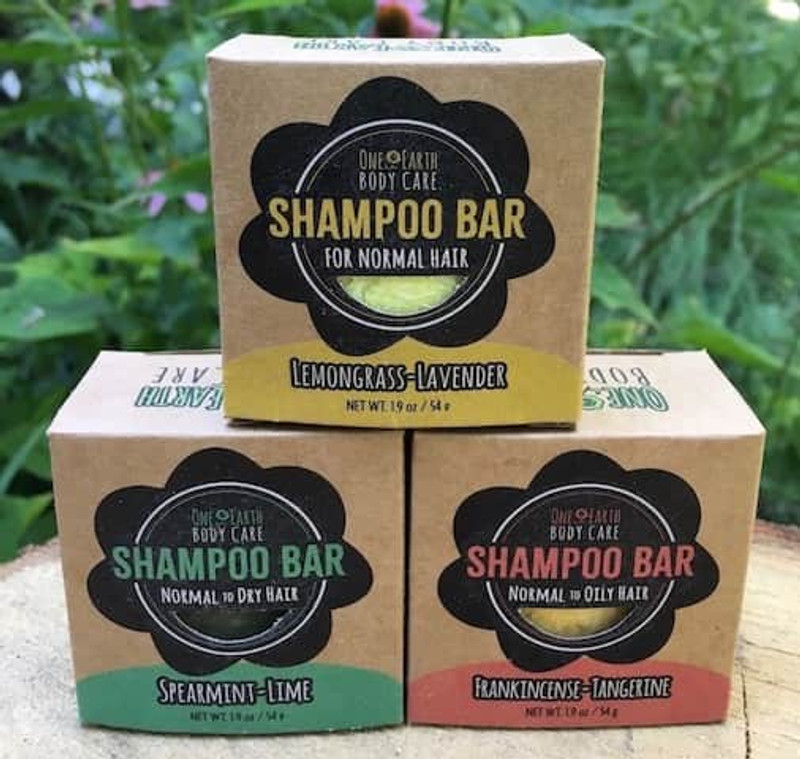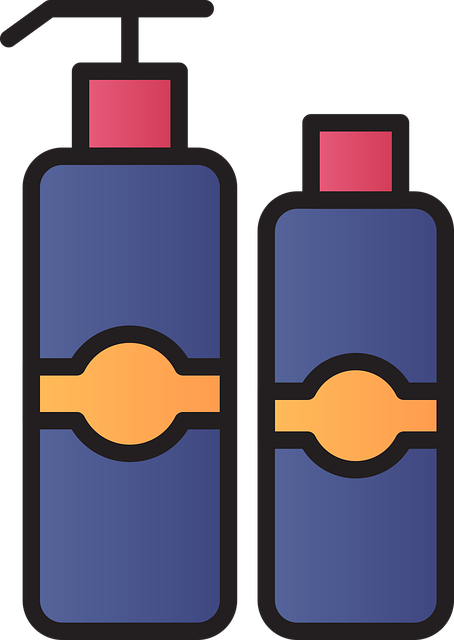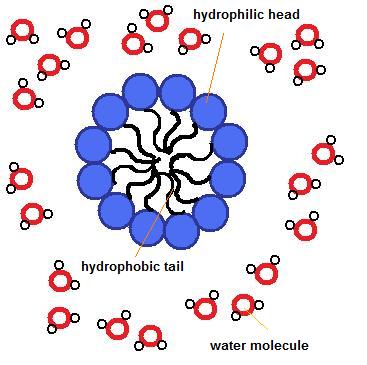
All About Shampoo Bars
Published by Anne Altor on Jul 9th 2019
All About Shampoo Bars

What is a shampoo bar?
Shampoo bars are made from surfactants, like the ones found in liquid shampoo, along with other hair-nourishing ingredients. A true shampoo bar is called a "syndet" bar—short for "synthetic detergent"—because the surfactants are produced "synthetically" by combining plant oils with water-loving molecules such as ammonium or sulfate ions. These surfactants are generally more gentle on the hair than traditional soap. Traditional soap consists of detergents (cleansing molecules) produced from oils and lye (sodium hydroxide solution). Soap has a high pH, which damages hair. More on that below.
How do surfactants work?
Surfactants are "surface-active" molecules. Surfactants have a fatty end (from the plant oil) that attaches to particles of oil and dirt. Their other end is water-soluble (the charged/ionic end), so it attaches to water molecules. This oil & dirt-capturing blob is called a micelle. When you rinse, the micelles wash away, taking the dirt and oil along with them. There are many surfactants to choose from. Some are powders, some are liquid, and some are in noodle form (the rice-like bits you see in the bars). Examples of surfactants include sodium cocoyl isethionate, cocamidopropyl betaine, sodium coco sulfate and coco glucoside.

How do you choose a shampoo bar?
The quality of a shampoo bar has a lot to do with the mixture of surfactants it contains, and the pH of the bar. Some surfactants are gentle, and some are aggressive. For example, sodium lauryl sulfate (SLS) is an aggressive surfactant (and it's derived from palm oil). Many people find that SLS dries out their hair and scalp. Sodium cocoyl isethionate is a more gentle surfactant. However, hair science shows that shampoos should be made from a blend of surfactants in order to increase mildness. If only one surfactant is used, the bar is likely to be drying or irritating. We use blends of 3 different surfactants in all of our shampoo bars.
It's important for the pH of shampoo bars to be low (acidic), between about 4.5 and 5.5. This acidic pH keeps the hair cuticle flat, which optimizes smoothness and manageability of hair and protects it from breakage. Protecting the hair cuticle also protects color treatments. The pH of shampoo bars can be adjusted with small amounts of a natural acid such as citric acid. Our tests with a calibrated pH meter found a pH range between 3.4 and 8.4 for other companies' shampoo bars. We formulate our bars to be between pH 5 and 5.5, and we test the pH of every batch.
In addition to the surfactant blend and pH, shampoo bars should have additives that address the needs of different hair types. For example, dry hair needs extra conditioning from ingredients such as plant butters and oils, panthenol, and conditioning compounds such as behentrimonium methosulfate. Oily hair needs less conditioning, so bars for oily hair should go light on the butters.
Can shampoo bars be conditioning?
Shampoo bars often include conditioning compounds and other ingredients to add softness, shine and manageability to hair. For example, behentrimonium methosulfate (BTMS) is a common addition to shampoo and conditioner bars. BTMS is derived from non-GMO rapeseed oil. Its positive charge lets it adhere to the hair shaft, which is negatively charged. BTMS helps to detangle hair and reduce static. One Earth shampoo bars for medium and dry hair contain other protective fats such as mango seed butter and Fair-Trade organic cocoa butter. We also add fermented bamboo to improve shine and manageability.
More important info about shampoo bars:
Real shampoo bars are NOT soap.
Some soap makers make soaps that they call "shampoo bars." The problem with soap-based shampoo is that the pH is too high for hair. The high pH of soap (pH 9 or higher) makes the hair shaft swell and the cuticle scales open, which leads to static electricity and hair damage. In hard water, calcium and magnesium react with soap and get deposited on hair, just like the soap scum you may find in the tub. There is no way to make soap the proper pH for hair; it is an alkaline product by definition. The surfactants in a low-pH syndet shampoo bar don't react with the minerals in hard water so you don't get a build-up on your hair.
What about palm oil?
Most liquid shampoos and shampoo bars contain ingredients derived from palm oil. We've been digging deep and talking with suppliers to understand the different surfactant options. We've ruled out surfactants that are typically derived from palm oil, including:
- Cetearyl alcohol
- Sodium lauryl sulfate
- Sodium laureth sulfate
- Sodium lauryl sulfoacetate
- Disodium laureth sulfosuccinate
- Glycerine
Some surfactants and emollients can be made from either palm or coconut oil. We seek out non-palm sources of the following ingredients:
- Cetyl alcohol
- Cocamidopropyl betaine
- Stearic acid
We continue to explore ingredients and sourcing in order to minimize conflict ingredients.
Are shampoo bars safe to use on color-treated hair?
All One Earth shampoo bars are safe to use on color treated hair. As we explained above, the pH of hair products should be in the acidic range to protect the hair cuticle. In addition, the shampoo bar should be made with a blend of cleansers and conditioning compounds. We have tested all of our bars on color-treated hair and all tests have resulted in happy customers whose color remains intact. When choosing a shampoo bar, make sure it does not look like a bar of soap. Check that it specifically says "color-safe" and provides information about pH on the package. Also look for a bar that contains at least 2 different surfactants (cleansers).
Shampoo bars perform
Just as liquid shampoos are not all created equal, the same is true for shampoo bars. Many customers tell us that our shampoo bars work better than the liquid products they were using before they tried our bars. Here are some features of our shampoo bars that lead to great results for hair:
- Unlike many liquid shampoos, our shampoo bars don't contain silicones. Silicones can build up on the hair, weighing it down and leaving it looking dull.
- Many liquid shampoos, and shampoo bars, contain the aggressive surfactant sodium lauryl sulfate (SLS) as the primary cleansing agent. When it's used as the primary surfactant, SLS can strip away too much of the hair's natural protective oils. We avoid SLS and we use a blend of 3 surfactants in every shampoo bar to increase mildness. Our bars are gentle yet effective, and they contain conditioning and emollient compounds to protect hair, improve combability and minimize static.
- Many companies make just one shampoo bar formula for all hair types. We make 3 formulas, one for dry hair, one for medium hair, and one for oily hair. We use different blends of surfactants, and different plant butters and other plant-based additives appropriate to different hair types.
Shampoo bars reduce plastic pollution
Plastic pollution is one of the most serious global environmental problems that we face. We must overcome our addiction to plastic packaging! Our oceans, rivers, soils and roadsides are strewn with plastic waste. Shampoo bars are one way to get plastic out of our everyday routines and to reduce our dependence on this polluting, toxic product. Shampoo and conditioner bars can be a meaningful choice based on caring for the Earth and all life.
Shampoo bars save water and energy
Most liquid shampoos are 70% to 80% water. Shampoo bars are a fraction of the weight of a bottle, so fewer trucks are needed and less oil is used to transport them. One Earth shampoo bars are packaged in recycled paper boxes, which saves trees, energy and oil. When you're done with the package, you just compost or recycle it.
Shampoo bars are travel friendly
Shampoo bars save lots of room in your suitcase and toiletry bag. Do you like to travel fast & light? Our TSA-friendly shampoo bars help you get through check-in without the hassle of liquids. They're also fantastic for camping trips. Since you can use our shampoo bars for your body too, they make a great all-in-one travel product.
Shampoo bars are cost-effective
Because shampoo bars are concentrated, you use a small amount per wash. A 1.9-oz shampoo bar lasts for about 40 washes, depending on your hair length. This is about as long as a 20-oz bottle of liquid shampoo. The environmental impacts of shampoo bars are lower than the impacts of products packaged in plastic bottles. All of these factors make One Earth shampoo bars a great value and a positive choice.
